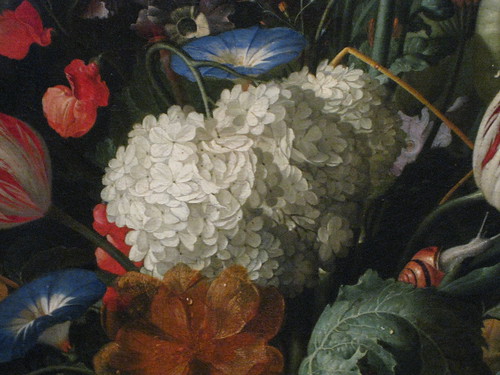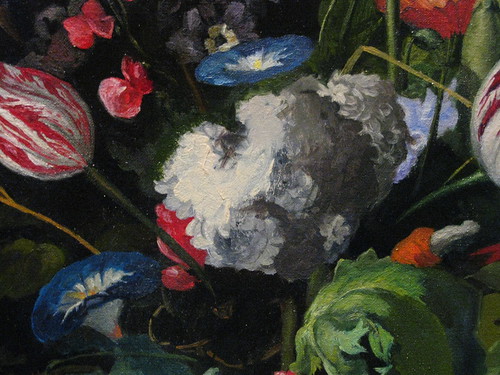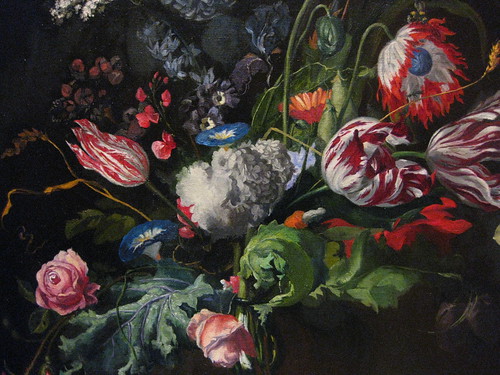I am back to share the details of yesterday's work at the NGA. Just as a benchmark, this is what I am trying to achieve... A pretty detailed rendering of a white hydrangea, that has visual depth and dimension.
Even though I did not get much painting done during December, time was spent contemplating the next step to take on this project and researching some technical questions. Recently I had read two helpful notes on glazing from Robert Massey's book Formulas for Painters
Here are the notes:
Note No. 8 : Glazes and dimension
By a judicious use of glazes, the painter can control to some extent the illusion of three dimensional space. The more heavily an area is glazed, the more it tends to recede; opaque surfaces, by contrast, appear to advance. By controlling the degree to which he glazes the various areas, the painter can push back or bring forward these areas.
Note No. 6 : Opaque Glazes
Though opaque glaze sounds like a contradiction in terms, it really works. Mix just enough lead white (Cremnitz or flake) with your glaze to render the glaze opaque. The immediate effect of this kind of glazing looks exactly like direct - or alla prima - painting. Within three or more years, the inevitable alteration of the pigment particles in the glaze layers will occur, allowing light to penetrate them, producing an opalescent quality in the glaze color. As in the use of any glazes, the entire painting should be glazed to some extent to maintain an optical unity.
These ideas got me thinking about the entire painting and what makes the hydrangea such a beautiful flower, but rather enigmatic. I had painted this flower earlier and was really not satisfied with how it turned out, so I had scraped that part down with the goal of returning to it.
{at the beginning of the day}
By taking the idea of using an opaque glaze I started working on this area by mixing some basic values and blocking them in some. I also re-worked all the edges where the hydrangea intersects, having total control of edge quality.
It was a slow going process originally and I ended up painting over areas multiple times trying to get the scale and values correct. This flower has so much detail that it requires constant attention to relationships. Before finishing the day I tried to get the entire flower blocked in, setting up for where the work will begin next week.
A few other things tackled this week included going over the morning glory again with new glazes to capture the warm yellow center and to enhance the variations of blue.
Glazing is the most important aspect of this painting and learning to think about the steps it takes to setup the desired affect has been the biggest reward of copying at the NGA. For instance in order to accomplish the quite subtlety of this painting each object must be worked on a minimum of three times with varying glaze layers. Some layers will be predominantly transparent in the pigments used, however recently I have also begun to investigate the affects of using more opaque pigments in the glazes. And as the effect of opaque glazes do not show up immediately I just have to have faith that eventually the magic will appear.






4 comments:
Really amazing, Elizabeth! I enjoy reading about your process.
And thank you for visiting and commenting on my blog. I was delighted.
Hi Virginia! I am glad to hear the descriptive posts are helpful, I sometimes wonder if they get to long :)
wow. that white flower is a bear and you got it!
Thanks Mary!
Post a Comment